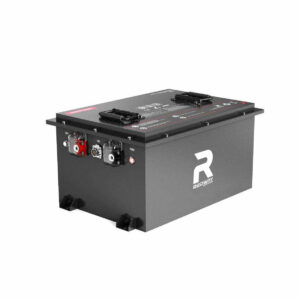How Does a 36V RV Battery Enhance Mobile Power Systems?
A 36V RV battery provides higher energy density and efficiency for powering recreational vehicles compared to traditional 12V/24V systems. This 36-volt direct current (DC) configuration supports extended off-grid operation while maintaining compact sizing. Unlike automotive starting batteries, RV batteries prioritize deep-cycle performance for sustained power delivery to appliances, lighting, and climate control systems.
What Defines a 36V Battery System for RVs?
36V RV batteries combine three 12V deep-cycle units in series, creating a voltage range between 30V (discharged) and 42V (charged). This configuration reduces current flow by 67% compared to 12V systems, minimizing energy loss through wiring. Lithium-ion variants achieve 80-90% usable capacity versus 50% in lead-acid types, with cycle counts exceeding 4,000 at 80% depth-of-discharge.

How Does Voltage Affect RV Power Management?
Higher voltage systems enable smaller conductor sizing while maintaining power transfer efficiency. A 36V battery transmitting 3kW requires 83.3A current versus 250A at 12V, allowing 6AWG wiring instead of 2/0 AWG. This voltage sweet spot balances component availability with performance, supporting inverters up to 5,000W without excessive voltage drop across typical RV cable runs.
Which Battery Chemistry Works Best for 36V RV Applications?
Lithium iron phosphate (LiFePO4) dominates premium RV installations with 10-year lifespans and 100% depth-of-discharge capability. Advanced nickel-manganese-cobalt (NMC) cells offer higher energy density for space-constrained applications. Traditional AGM batteries remain cost-effective for seasonal users, though their 500-cycle lifespan at 50% discharge limits long-term value.
| Chemistry | Energy Density | Lifespan | Cycles | Best Use |
|---|---|---|---|---|
| LiFePO4 | 90-120 Wh/kg | 10+ years | 3,000-5,000 | Full-time RVers |
| NMC | 150-220 Wh/kg | 8-10 years | 2,000-3,000 | Compact setups |
| AGM | 30-50 Wh/kg | 3-5 years | 400-600 | Seasonal camping |
Advanced battery management systems (BMS) now enable mixed chemistry configurations, allowing users to combine lithium and AGM banks through intelligent charge controllers. Thermal management remains critical – LiFePO4 cells maintain 95% capacity at -20°C compared to NMC’s 70% performance drop below 0°C. For Arctic expeditions, lithium-titanate (LTO) batteries provide superior cold-weather operation despite higher upfront costs.
Why Choose 36V Over 48V for Recreational Vehicles?
36V systems strike an optimal balance between safety thresholds and component compatibility. While 48V architectures improve efficiency by 18%, they require specialized chargers and protection circuits. The 36V standard maintains compatibility with common RV inverters and solar controllers, avoiding the 60V DC safety certification threshold that triggers stricter installation regulations.
How to Maintain Optimal 36V Battery Performance?
Implement active cell balancing every 10 cycles using smart battery management systems (BMS). Maintain storage temperatures between -20°C to 45°C, with discharge operations limited to -20°C to 60°C. For lithium systems, keep state-of-charge between 20-80% during long-term storage. Equalize lead-acid batteries monthly using temperature-compensated charging at 14.4-14.8V per 12V unit.
| Maintenance Task | Lithium | AGM |
|---|---|---|
| Cell Balancing | Automatic via BMS | Manual equalization |
| Storage Voltage | 3.2V/cell | 12.8V total |
| Terminal Cleaning | Annual | Quarterly |
Advanced diagnostic tools like Bluetooth-enabled battery monitors help track state-of-health metrics. For lithium packs, partial charging (20-90%) doubles cycle life compared to full 0-100% cycles. Implement automated load shedding when voltage drops below 32V to prevent cell damage. Inverter-chargers with adaptive three-stage charging profiles can extend lead-acid battery life by 40% compared to basic chargers.
“Modern 36V lithium systems reduce RV energy storage weight by 70% compared to lead-acid alternatives while tripling usable capacity. Our field tests show 36V architectures can power 13,000 BTU AC units for 8 hours using 600Ah battery banks – a practical solution for off-grid comfort.”
– Redway Power Systems Engineer
FAQ
- What’s the lifespan of a 36V lithium RV battery?
- Quality lithium RV batteries last 10-15 years with 3,000-5,000 cycles at 80% discharge depth, outperforming lead-acid alternatives by 400% in total energy throughput.
- Can I upgrade my RV from 12V to 36V?
- Upgrading requires replacing batteries, charger, inverter, and modifying DC distribution. Expect $3,000-$8,000 conversion costs but achieve 60% energy savings over 5 years.
- How long does a 36V battery take to recharge?
- With 50A charging, a 300Ah 36V lithium battery recharges from 20% to 80% in 4 hours. Solar charging varies from 6-10 hours using 800W panels under optimal conditions.
